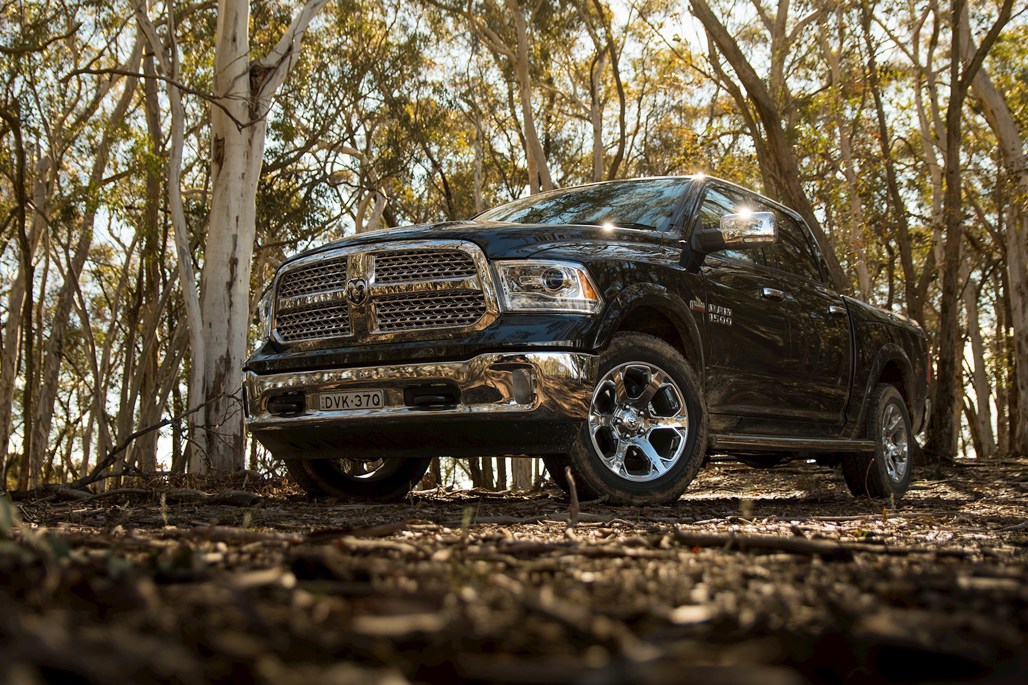Yesterday, we traveled to Bathurst to get our mits on the new RAM 1500, ahead of its launch to the New Zealand market.
The 1500 is the baby of the RAM range, so to speak. It doesn't necessarily look like much of a baby, but it's 213mm shorter in length, 49mm shorter in height, and almost a tonne lighter than the larger 2500 model.
Pricing for the Kiwi market will start at $94,990 for the entry-level Express model. The Laramie we've driven here (chrome bumpers are the giveaway) starts at $114,990, with the equivalent 2500 another $50k on top of that.
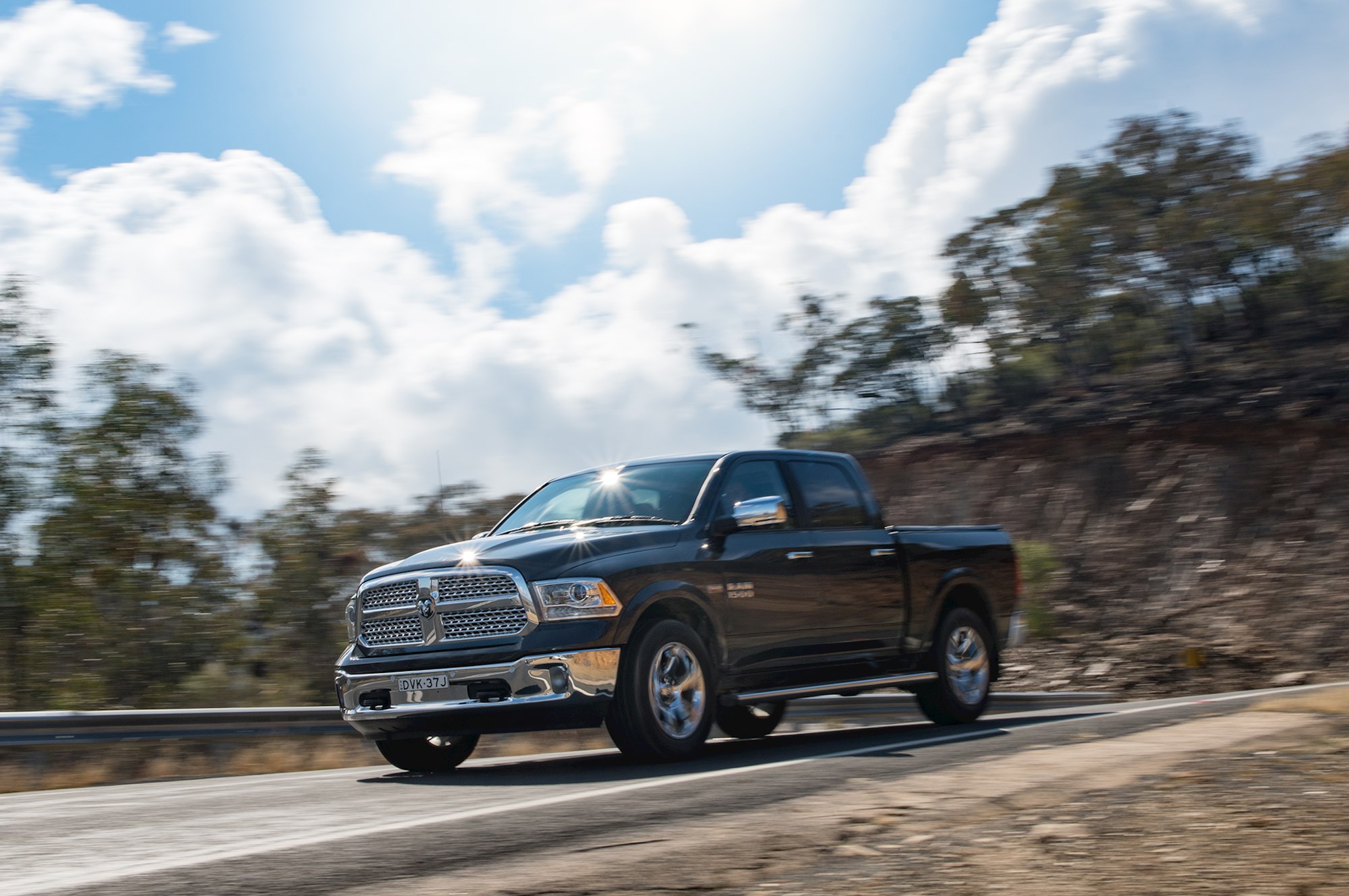
So, what do you need to know about the RAM 1500? Our full debrief will come later on, but for now here's some of our first impressions.
Kiwis get the best (sort of)
That's mainly to do with the thing under the bonnet.
Australia get much more choice when it comes to the 1500 model. Along with the six models both markets share (four Express models including the 'Black Pack' and two Laramie models) Australians also get the option of choosing different axle ratios — either the 3.21 or the beefier 3.92.
All models get the same Hemi V8 (producing 291kW at 5600rpm and 556Nm at 3950rpm), and unsurprisingly it's a charming thing to toy with. But, it's noticeably punchier with the 3.92 axle ratio fitted. And all 1500s coming to New Zealand will have this ratio as standard because, according to RAM, we love grunt. It also carries superior towing capacity, at 4500kg versus the 3500kg of the 3.21.
But, if you inquire with RAM about wanting a 3.21 instead, they could be open to doing a deal. And those wanting a diesel should just sit tight — there's one on the way.
How's the branding
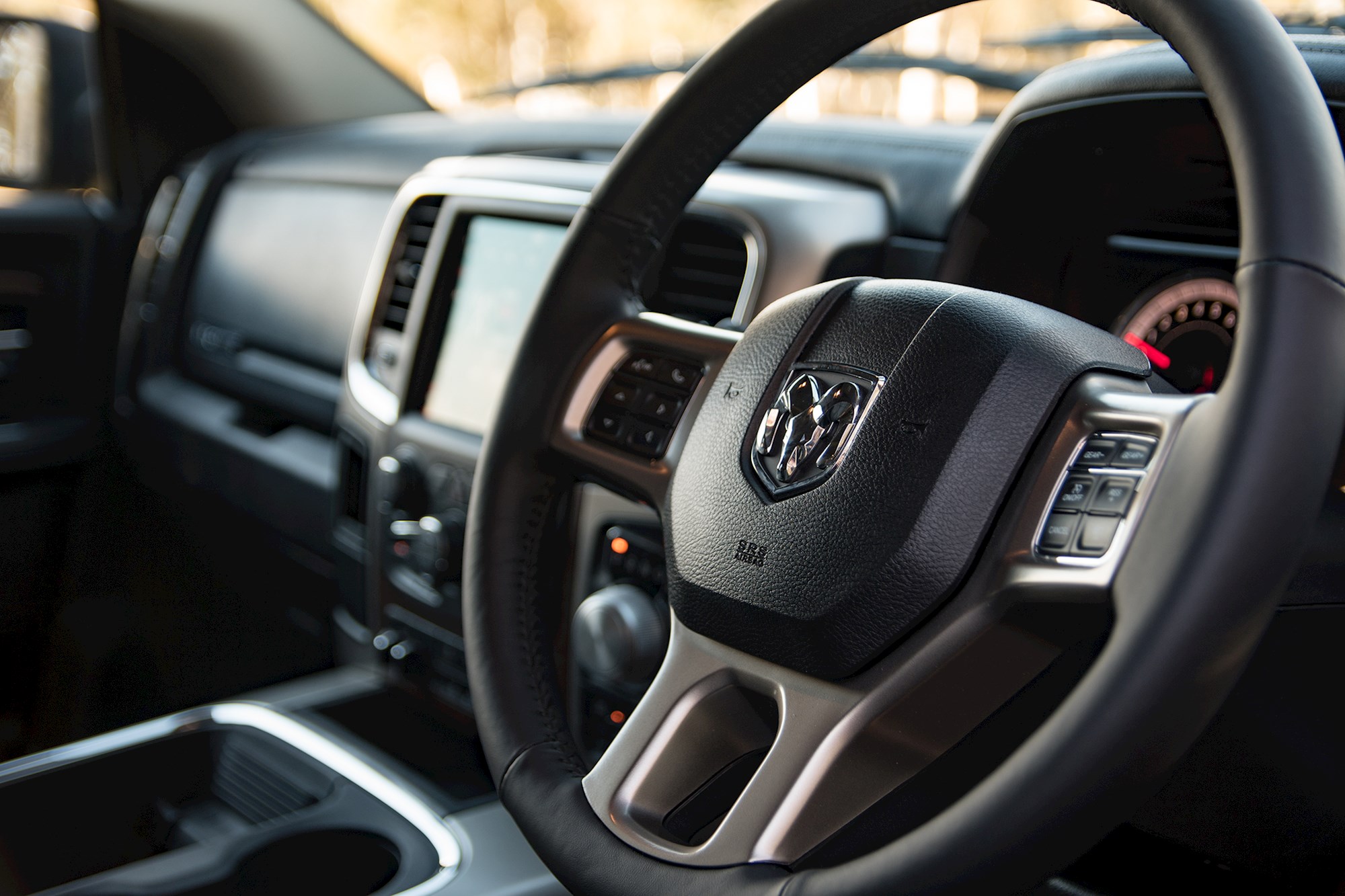
The amount of badges and logos plastered all over the 1500 is incredible.
Americans love their use of vehicles as symbols of self, so of course it's natural for a product like the 1500 to scream its presence from the roof-tops. But even along that narrative it's pretty extreme.
Take the cabin, for instance. Along with the RAM logo on the steering wheel there's also ...
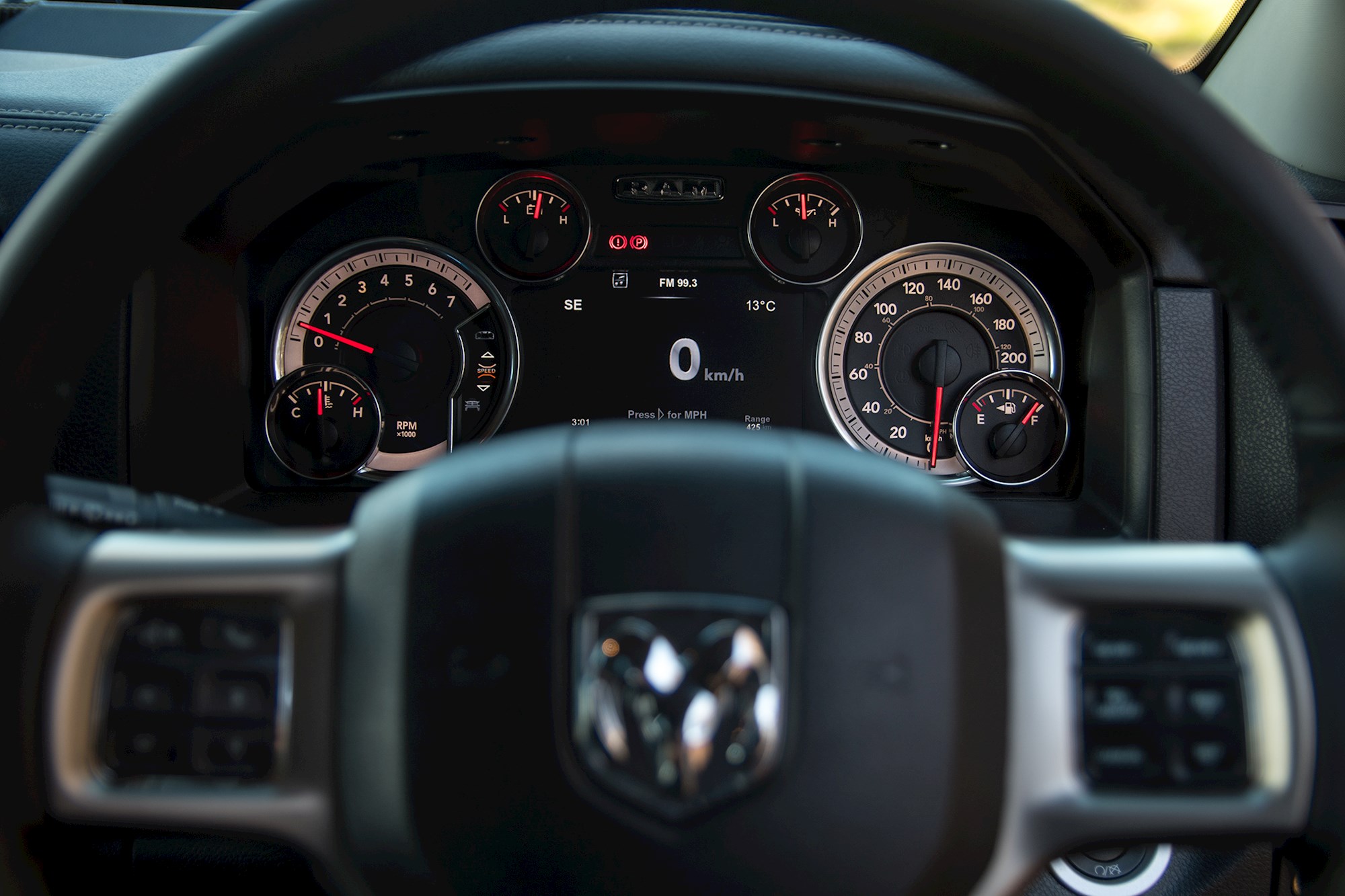
A RAM logo above the speedo and tacho.
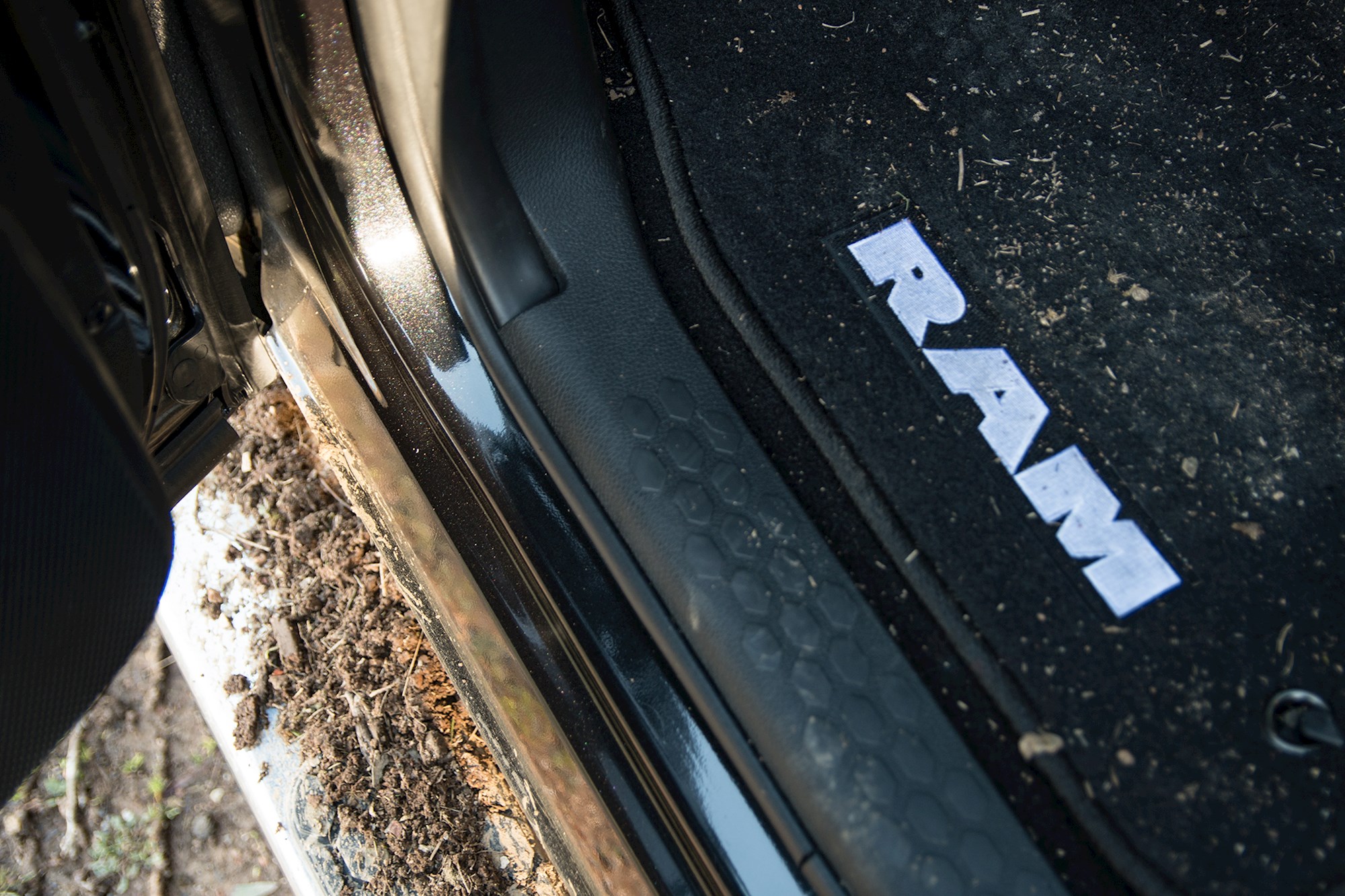
Logos on the doormats.
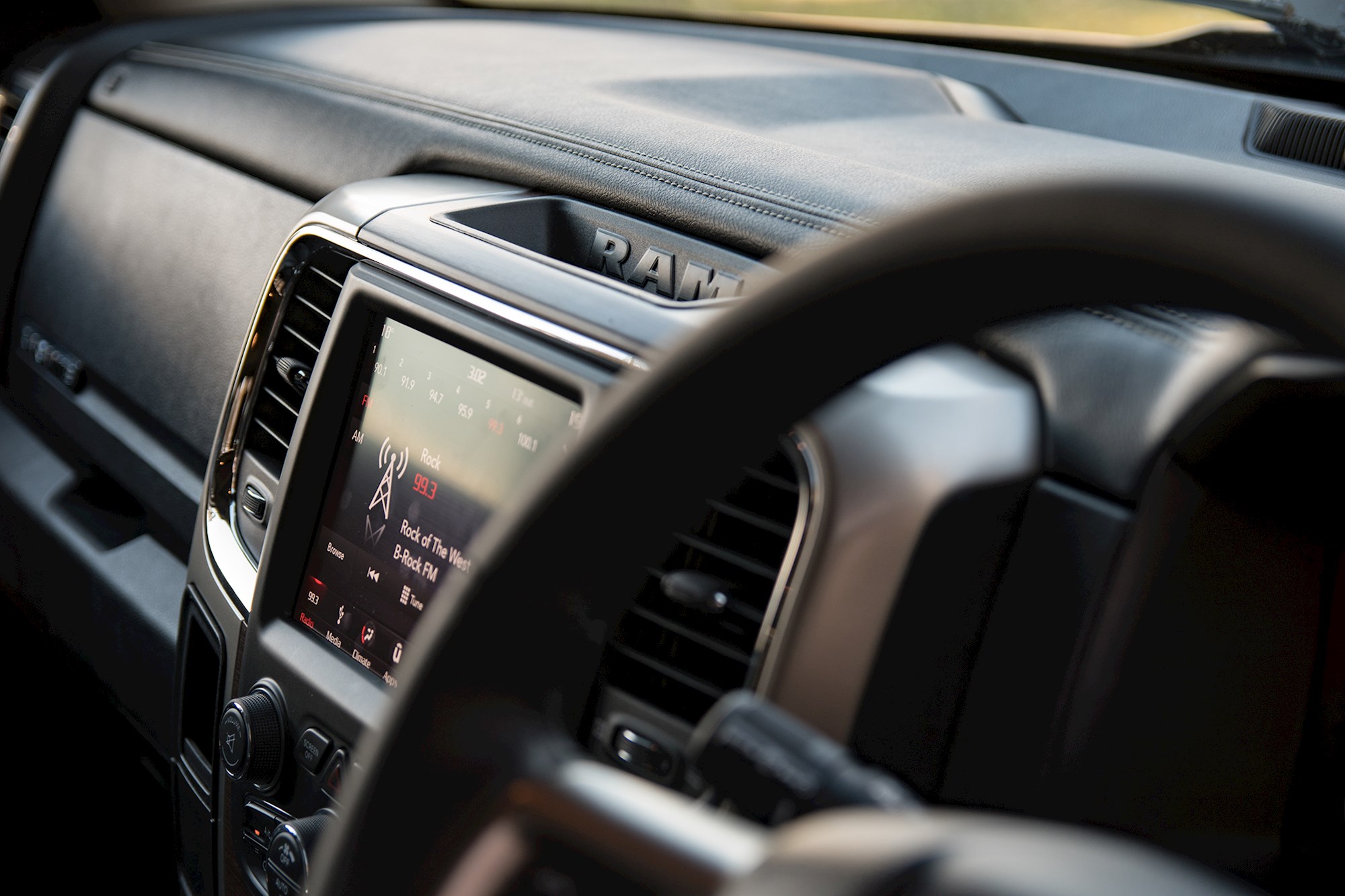
A sly logo, peeking over the top of the dash.
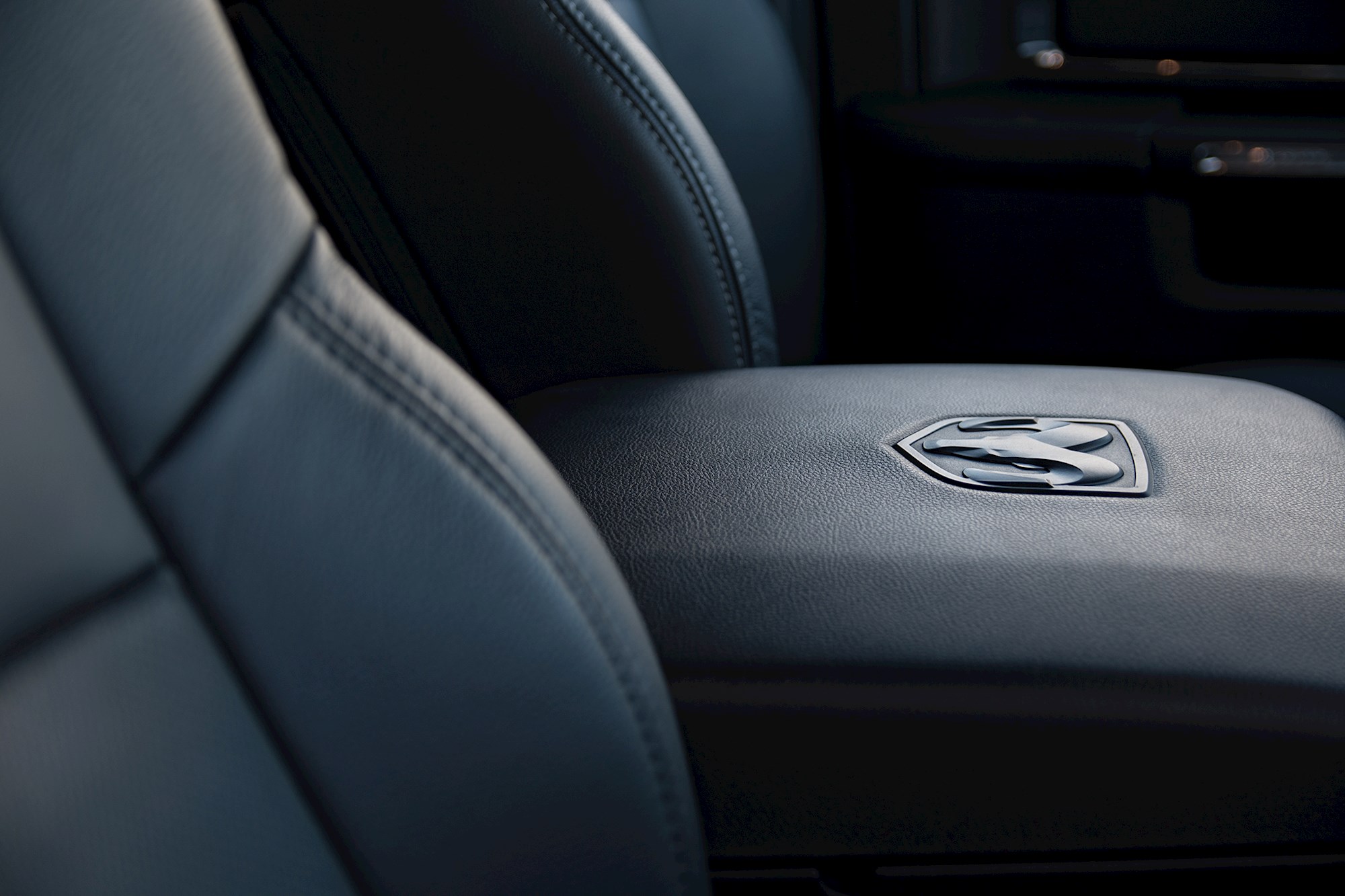
Another over the top of the huge central arm rest.
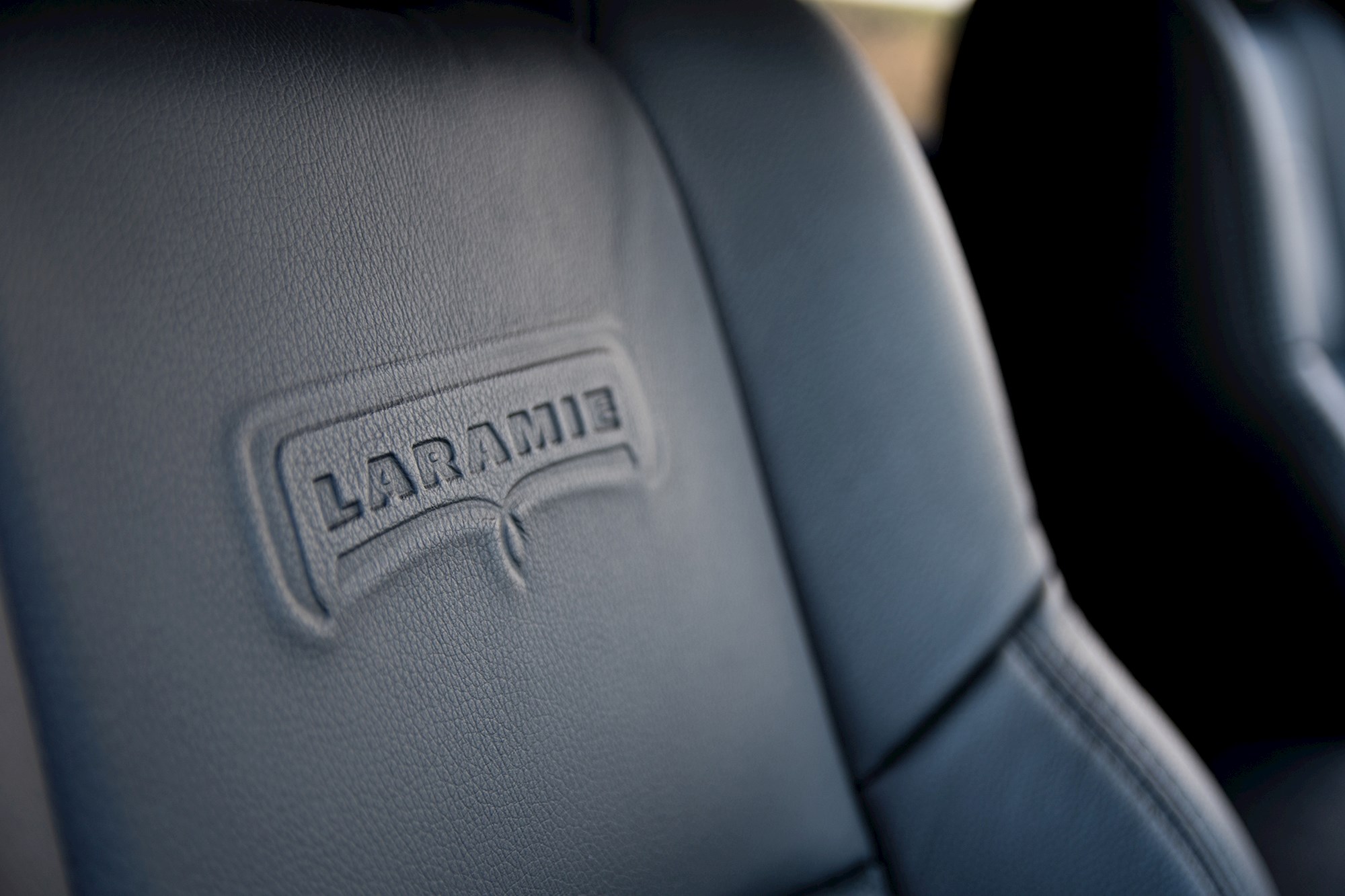
On top of those, the Laramie also gets these pressed into the seats.
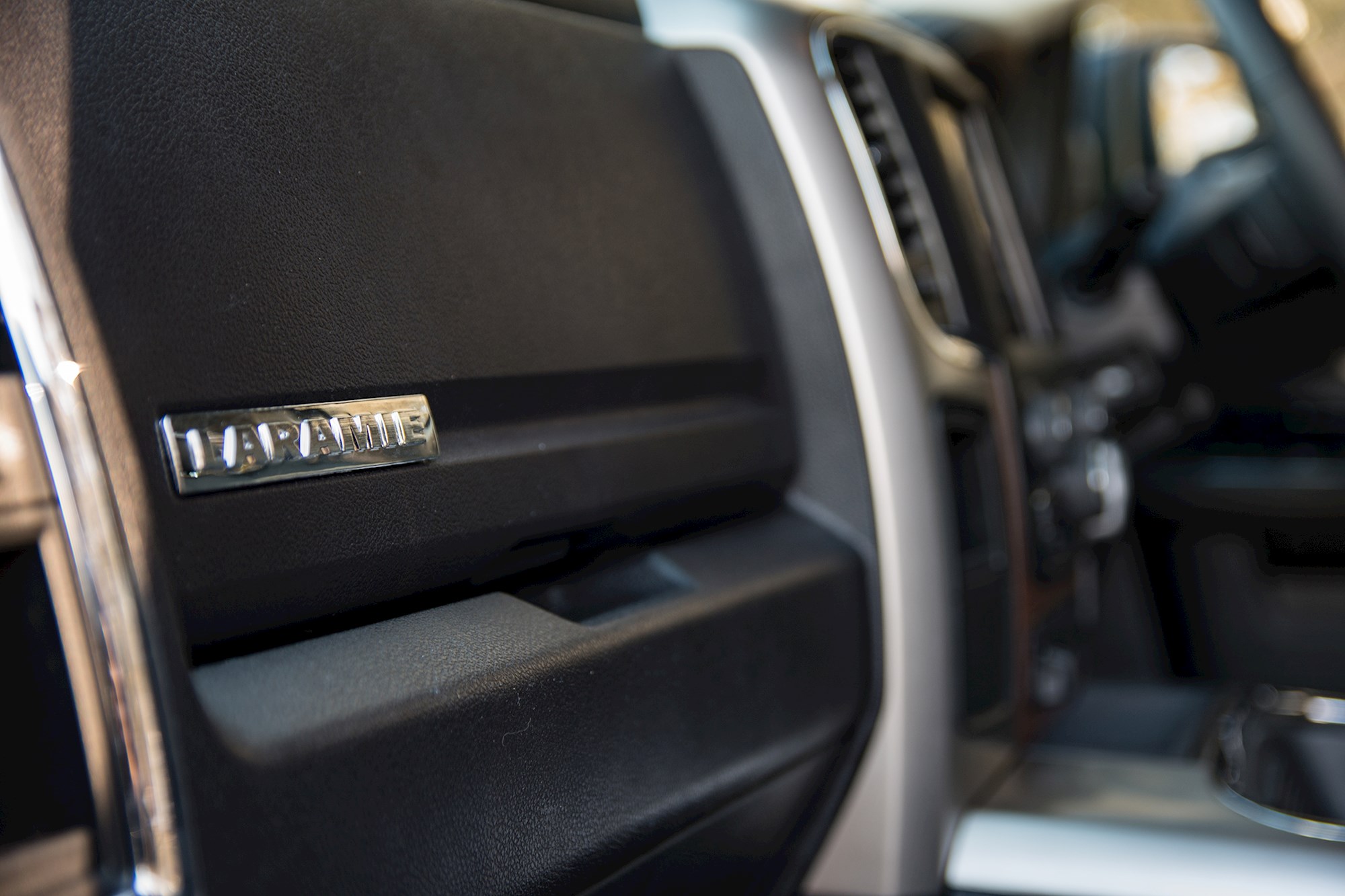
And finally there's another Laramie logo on the passenger side of the dashboard.
The end of American cabins as we know them?
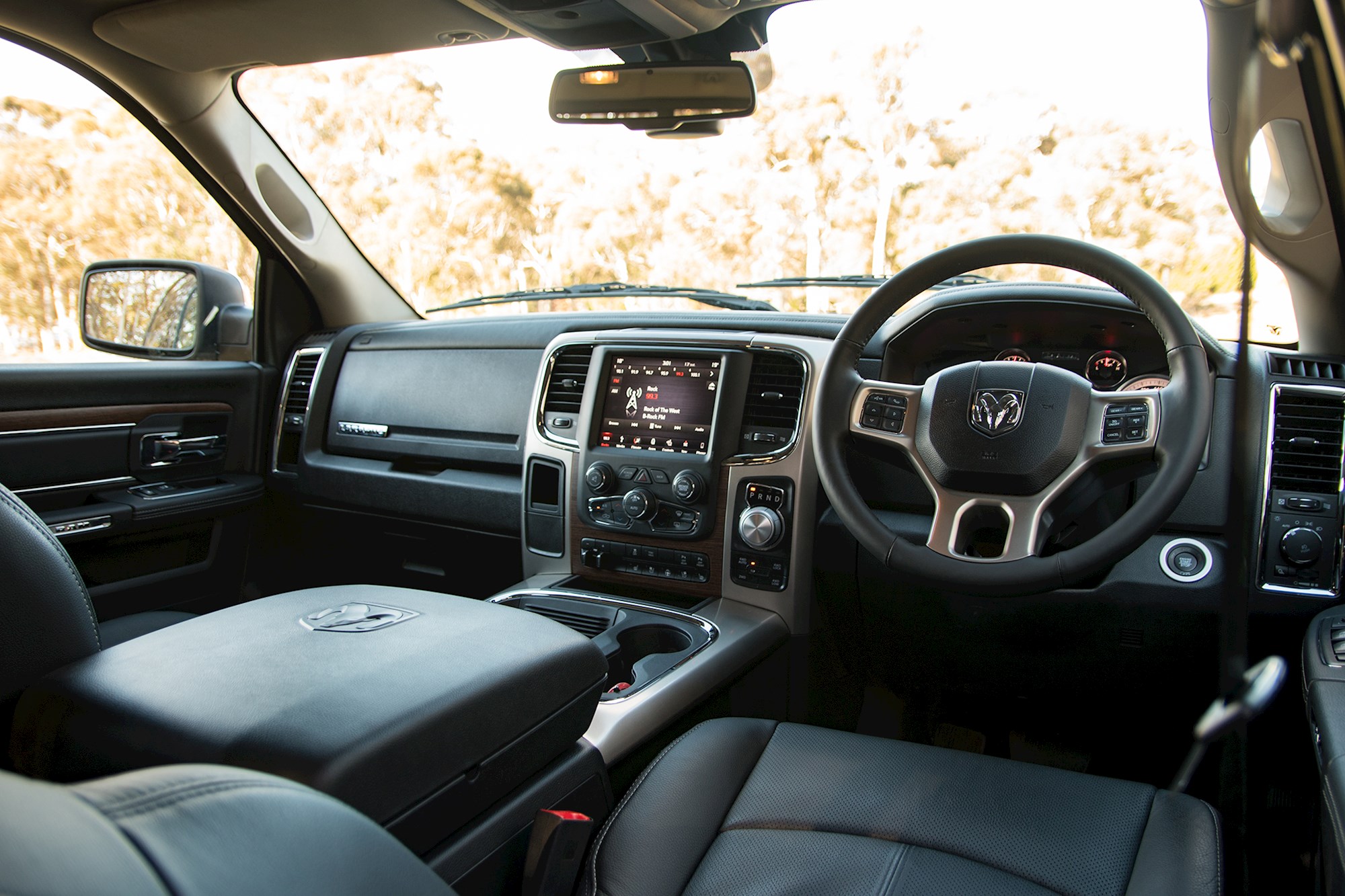
Cabins in American cars have always copped flack for perceived cheapness, generally regarding material quality and fit and finish.
The 1500's cabin though is probably one of the most well thought out interior spaces I've seen in a long time. Storage and space (including in the second row) is unsurprisingly immense. But, it's the barrage of little touches that help take it a step above.
There's a little ridged section in the centre console that phones can be perched on (it even includes apertures for plugs to flow through), and through the RAM U-Connect system you can even switch between using two paired phones while on the run.
Seamless
Just staying with the interior for a second.
Switching a predominantly left-hand drive vehicle to being right-hand drive markets like New Zealand is pretty finicky work. And only one place in Australia is officially authorized to do it — Socobell.
And their work is exceptional. The dashboards in our test trucks had great fit and finish, and remained creak-free throughout the day despite some spirited off-roading shaking things up a touch.
It still drives like a truck
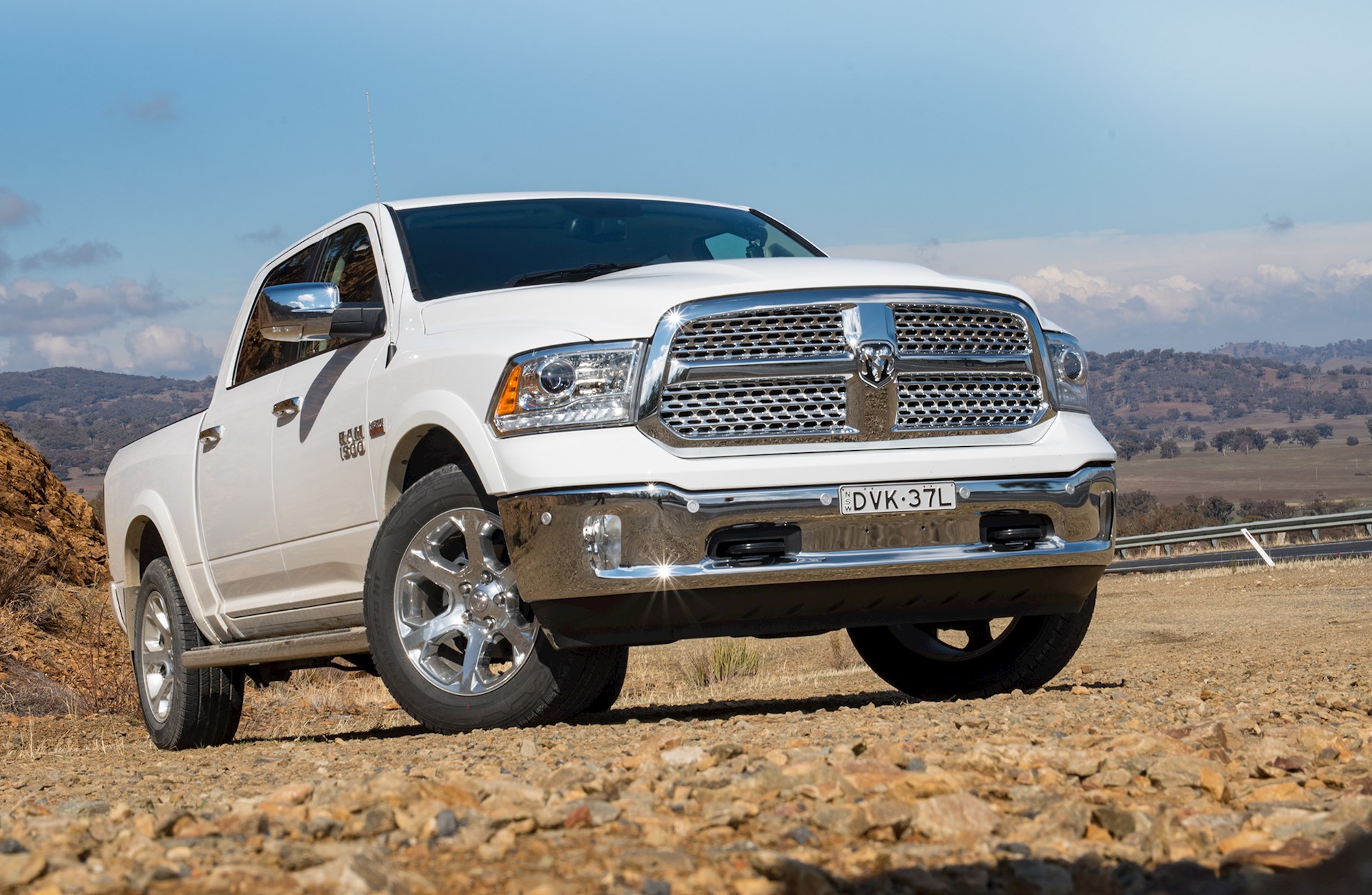
While the rest of the motoring world is trying its darnedest to be future facing with implementation of the latest and greatest tech, the 1500 sticks with the tried and true. Probably to its own benefit.
Granted it's still packed to the rafters with kit, including cylinder de-activation, electronic brake distribution, braking assist, and both trailer brake and trailer sway control.
But fundamentally, the 1500 is still an old-school, dual cab body-on-frame, beast of a thing. The recirculating ball steering is sharp enough to guide the brute effectively, but it's balanced out with bouncing suspension that constantly begs for some all-balancing payload with each and every bump in the road. Typical fare from most work horses.

